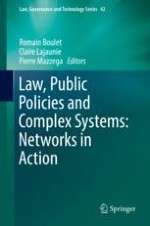2019 | OriginalPaper | Buchkapitel
3. Organizational Consciousness Versus Artificial Consciousness
verfasst von : Claire Lajaunie, Pierre Mazzega
Erschienen in: Law, Public Policies and Complex Systems: Networks in Action
Aktivieren Sie unsere intelligente Suche, um passende Fachinhalte oder Patente zu finden.
Wählen Sie Textabschnitte aus um mit Künstlicher Intelligenz passenden Patente zu finden. powered by
Markieren Sie Textabschnitte, um KI-gestützt weitere passende Inhalte zu finden. powered by
